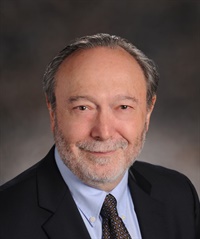
Can the way we use our voice actually help change a person’s nervous system? Polyvagal Theory provides a neurologically based understanding of how human vocalizations and the way we say what we say can support mental and physical health. Discover how the Safe and Sound Protocol promotes social engagement and safety in therapy.
This online program is worth 2 hours CPD.
| File type | File name | Number of pages | |
|---|---|---|---|
| Manual - Safe and Sound (4.1 MB) | 39 Pages | Available after Purchase | |
| Text Document | Transcript (58.3 KB) | 36 Pages | Available after Purchase |
| Manual - Safe and Sound - French (4.1 MB) | 39 Pages | Available after Purchase | |
| Manual - Safe and Sound - French (4.1 MB) | 39 Pages | Available after Purchase | |
| Text Document | Transcript - French (58.3 KB) | 36 Pages | Available after Purchase |
| Text Document | Transcript - French (58.3 KB) | 36 Pages | Available after Purchase |
| Manual - Safe and Sound - Italian (4.1 MB) | 39 Pages | Available after Purchase | |
| Manual - Safe and Sound - Italian (4.1 MB) | 39 Pages | Available after Purchase | |
| Text Document | Transcript - Italian (58.3 KB) | 36 Pages | Available after Purchase |
| Text Document | Transcript - Italian (58.3 KB) | 36 Pages | Available after Purchase |

Stephen W. Porges, PhD, is a distinguished University Scientist at Indiana University, where he is the founding director of the Traumatic Stress Research Consortium within the Kinsey Institute. He holds the position of Professor of Psychiatry at the University of North Carolina and Professor Emeritus at the University of Illinois at Chicago and the University of Maryland and is a founder of the Polyvagal Institute. Dr. Porges served as president of both the Society for Psychophysiological Research and the Federation of Associations in Behavioral & Brain Sciences and is a former recipient of a National Institute of Mental Health Research Scientist Development Award. He has published approximately 400 peer-reviewed scientific papers across several disciplines including anesthesiology, biomedical engineering, critical care medicine, ergonomics, exercise physiology, gerontology, neurology, neuroscience, obstetrics, pediatrics, psychiatry, psychology, psychometrics, space medicine, and substance abuse. His research has been cited in more than 50,000 peer-review publications. In 1994, Dr. Porges proposed the Polyvagal Theory, a theory that links the evolution of the mammalian autonomic nervous system to social behavior and emphasizes the importance of physiological state in the expression of behavioral problems and psychiatric disorders. The theory is leading to innovative treatments based on insights into the mechanisms mediating symptoms observed in several behavioral, psychiatric, and physical disorders.
He is the author of The Polyvagal Theory: Neurophysiological foundations of Emotions, Attachment, Communication, and Self-Regulation (Norton, 2011), The Pocket Guide to the Polyvagal Theory: The Transformative Power of Feeling Safe (Norton, 2017), Polyvagal Safety (Norton, 2021), co-author with Seth Porges of Our Body Polyvagal World (Norton, 2023), and co-editor with Deb Dana of Clinical Applications of the Polyvagal Theory: The Emergence of Polyvagal-Informed Therapies (Norton, 2018). Dr. Porges is also the creator of a music-based intervention, the Safe and Sound Protocol™, which currently is used by approximately 3,000 therapists to improve spontaneous social engagement, to reduce hearing sensitivities, and to improve language processing, state regulation, and spontaneous social engagement.
Speaker Disclosures:
| 5 |
|
| 4 |
|
| 3 |
|
| 2 |
|
| 1 |
|
Satisfaction Guarantee
Your satisfaction is our goal and our guarantee. Concerns should be addressed to info@pesi.co.uk or call 01235847393.
Please wait ...